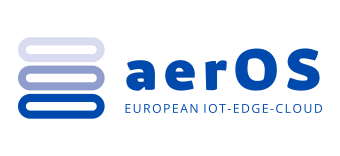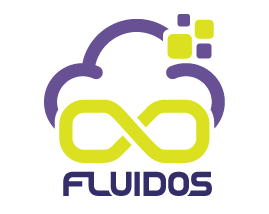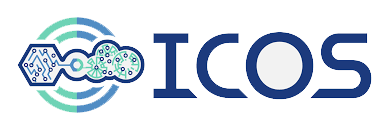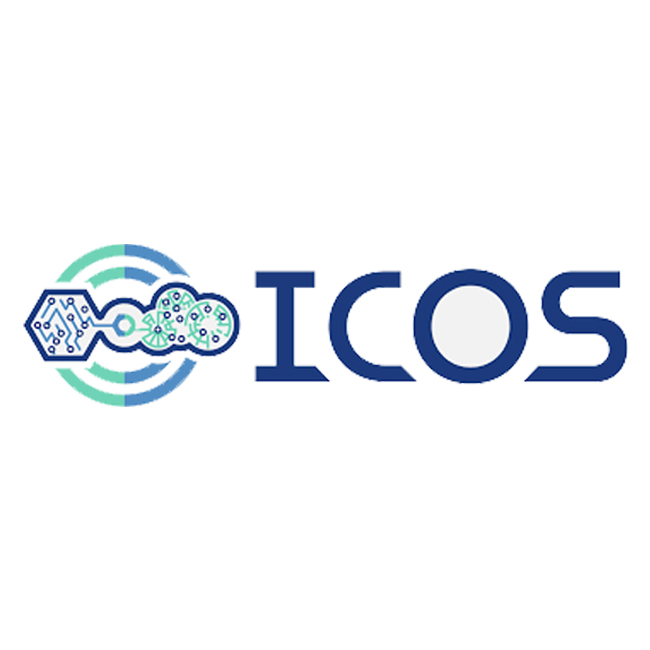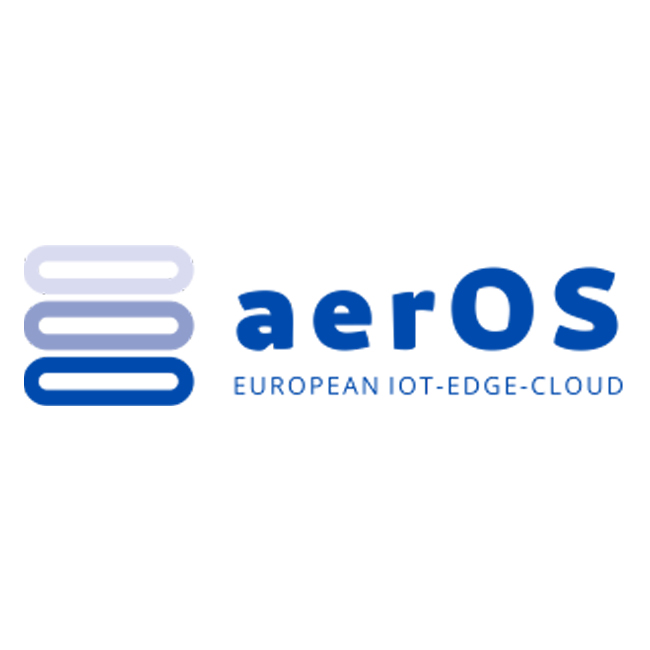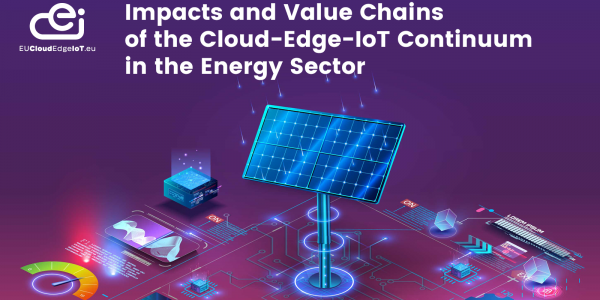The energy sector is undergoing a comprehensive transformation. Climate change and a drive toward decarbonisation require dramatic changes to the energy grid. The modern energy grid must enable a widespread adoption of renewable energy, dynamic energy flows in which many consumers can also be producers, surging demand for electric vehicles and chargers, resilience in the face of geopolitical shocks and changing energy suppliers, and demand management through dynamic pricing and provision of detailed data and energy management capabilities to consumers.
The following “Industry Spotlight Use Cases” sections are curated based on comprehensive surveys conducted by IDC in 2023, targeting market and industry professionals across Europe. The examples accompanying each spotlight use case category are derived from use cases executed by the Research and Innovation Action teams within the EUCloudEdgeIoT community. As research progresses, we will continue to update this information to reflect the latest findings and developments.
Spotlight use case categories

Smart grids
Power utilities are enabling energy transformation by deploying smart grids. Smart grid is a use case category in which utilities use field devices to control and optimize (e.g.) power flow, respond to variable demand, manage renewable energy production from consumers and independent producers, shift peak demand through variable pricing, and detect and respond to faults. It increases the reliability of the infrastructure, increases efficiency and reduces energy usage. it promises tremendous benefits to the energy sector and to the wider European economy and society. With the more comprehensive modernisation of energy grids toward smart grids, Europe will gain a more reliable and resilient energy supply, incorporate renewables, manage the transition to electric vehicles, reduce carbon emissions, and shift peaks in demand to reduce overall infrastructure needs. The smart grid use-case category includes one of the most widely known IoT use cases, smart metering, which accounts for tens of millions of connected devices in Europe. Smart metering allows consumers to monitor and manage energy usage at a granular level and to respond to price signals to reduce peaks in demand. According to UNLOCK-CEI survey, 54% of energy respondents reported using smart metering. Furthermore, beyond smart metering, the smart grid also includes more advanced features and technologies that require substantial investment and innovation over the next several years. As a widely distributed system, a smart grid incorporates a large number of sensors and control systems throughout the network. This category includes technology components for IEDs, phasor measurement units, power line sensors, RTUs, and smart thermostats. Management of the overall grid requires centralised computing resources, while the distributed components require a variety of edge gateways and other infrastructure.
Sub-category use-cases
- Smart meters
- Smart appliances and thermostats
- Renewable energy systems (solar, wind, other)
- Smart home management systems for flexible energy management; smart building systems
- Grid management systems
- EV charging systems
- Renewable energy systems
Projects use-cases
Edge Computing Containers near Renewable Energy Sources
Concept:
Data flows from IoT devices of the wind, photovoltaic and hydro energy sources in real time (or also periodically (e.g. hourly, daily) to federated edge computing nodes located directly at energy sources and connected to them. The nodes (Infrastructure Elements) process the data and provide them back to the IoT devices to manage them in real time. They also provide and receive SOME aggregated data to/from the cloud of the data center.
Benefits:
Real time (and hourly, daily) information from the energy sources is processed in the edge computing node, where smart orchestration and self actions -powered by AI -occur. Coupled with the cloud intelligence of the data center (manageability interface), energy providers can make coordinated decisions to balance the elecitricity network. Orchestration of energy production of wind and photovoltaic sources and of energy consumption sinks including the electric vehicle charging leads to more optimal consumption of renewable energy and increased profits of the energy providers.
Energy Efficient, Health Safe & Sustainable Smart Buildings
Concept:
Proper employees’ placement, social distancing, energy efficiency, along with business and personal preferences becomes a complex dynamic task. Real-time processing of data and decision making close to events, supporting distribution through aerOS capabilities, can offer autonomous solution for safe, more energy efficient and and sustainable buildings.
Benefits:
Clear benefits of applying aerOS in this scenario are the capacity of making buildings smarter, playing an active role in the energy reduction goal. Also, the quantity and quality of data required for performing advanced predictivon will be relaxed. At the same time, the data sovereignty at the edge will be improved, reducing the dependency of cloud data centers. Also, the model will be able to be replicated and encompass other buildings in the same city, forming more energy-efficient communities.
Intelligent Power Grid
Concept:
Integration of cloud-edge processing with the power grid, incorporation of sensors measuring (real-time) electricity parameters in the continuum, network analytics-based issue detection, with advanced resiliency capabilities of the ICT services also in case of network partitions.
Benefits:
The automatic and seamless orchestration in FLUIDOS enhances the availability of electrical parameters (namely, seamless phasor data concentration and grid state computation) even in presence of multiple ICT outages and/or disconnection from central control centers, hence reducing the risk of electrical downtime in the power grid, which needs accurate phasor-data estimations in order to deliver electricity to end-users. FLUIDOS will orchestrate the PDCs based on node-to-PMU latency and enable local processing maintaining PDCs and analysis applications’ functionality during communication interruptions.
Energy Management and Decision Support system (EMDS)
Concept:
ICOS EMDS system aims to deliver a secure and efficient energy system, based on advanced and reliable Machine Learning techniques for energy forecasting and home-to-home parameters sharing to avail of learnings obtained in other houses. The ICOS AI ‘brain’ will shape the future usage of the Prosumers with the aim of flattening the demand curve by removing demand on the grid at peak time and boosting energy usage at night-time.
Benefits:
Thanks to ICOS, the application will be able to leverage Cloud and Edge capabilities for real time solutions, with latency reduction, increased security and flexibility to tailor to customers’ specific needs, using automated decisions to decrease costs, reduce generation curtailment, maximise consumption and usage of renewable energy, increasing client satisfaction and retention.
Energy and utilities: Windmill Maintenance
Concept:
The windmill Maintenance use case is to automate the process of data acquisition and processing using drones. This will allow automatic and real-time handling of the turbine damage detection process being infrastructure agnostic and requiring minimal human intervention. The use case will demonstrate how the NebulOuS framework can efficiently deploy wind turbine inspection software, efficiently utilizing cloud and fog resources.
Benefits:
- immediate quality feedback and on-line process.
- no dedicated data upload step – the data processing begins at the edge and is redirected to private or public cloud resources only if a potential anomaly is identified.
- asset management application involved only after data is processed – minimal amount of data collected and stored for further offline analysis.
Smart Energy & Smart Mobility
Concept:
Smart Grid Flexibility –monitoring and analysing of MV/LV electricity voltage quality by using innovative power sensors able to protect MV/LV substation breakers and Smart meters which measure electricity generation and consumption.
Smart Mobility/City – drivers-friendly scenarios based on traffic flow and parking prediction (EV, EVSE, cameras,…); dispatchable charging of EVs based on RES demand-response along with human-centred smart micro-contracts and micro-payments.
Benefits:
- Ensuring electricity grid stability by monitoring and balancing voltage, reducing the risk of power failures.
- Improving the use of renewable energy sources, promoting a more sustainable and eco-friendly power generation.
- Increasing the efficiency of electric vehicle charging in urban areas, making it more user-friendly.
- Utilizing EV charging as a demand response mechanism, contributing to the overall balance and stability of the energy grid.
- Reducing CO2 footprint through micro-services migration and green data center infrastructure, contributing to environmental sustainability.
Energy Management in Smart Buildings/Cities
Concept:
Development and evaluation of Nephele technologies (Virtual Object and Virtual Object Stack). The goal is to apply these technologies in intelligent monitoring and remote energy management within the spectrum of smart buildings. The key objectives include the development of applications that facilitate energy-efficient control, the provision of personalized services to end-users, and the establishment of an automation schema grounded in real-time data. The use case is also focus on video analysis for detecting individuals and objects.
Benefits:
Real-time monitoring and data processing using AI models and CEP rules for decision making and control automation thanks to the aggregation of data from different sources. The use of Virtual Objects allows adding to constrained IoT devices advanced computing capabilities that allow complex cryptography, advanced security systems, device intelligence, better management of device and network resources, improving performance and savings energy, while offering broader and more intelligent control of the energy management systems.
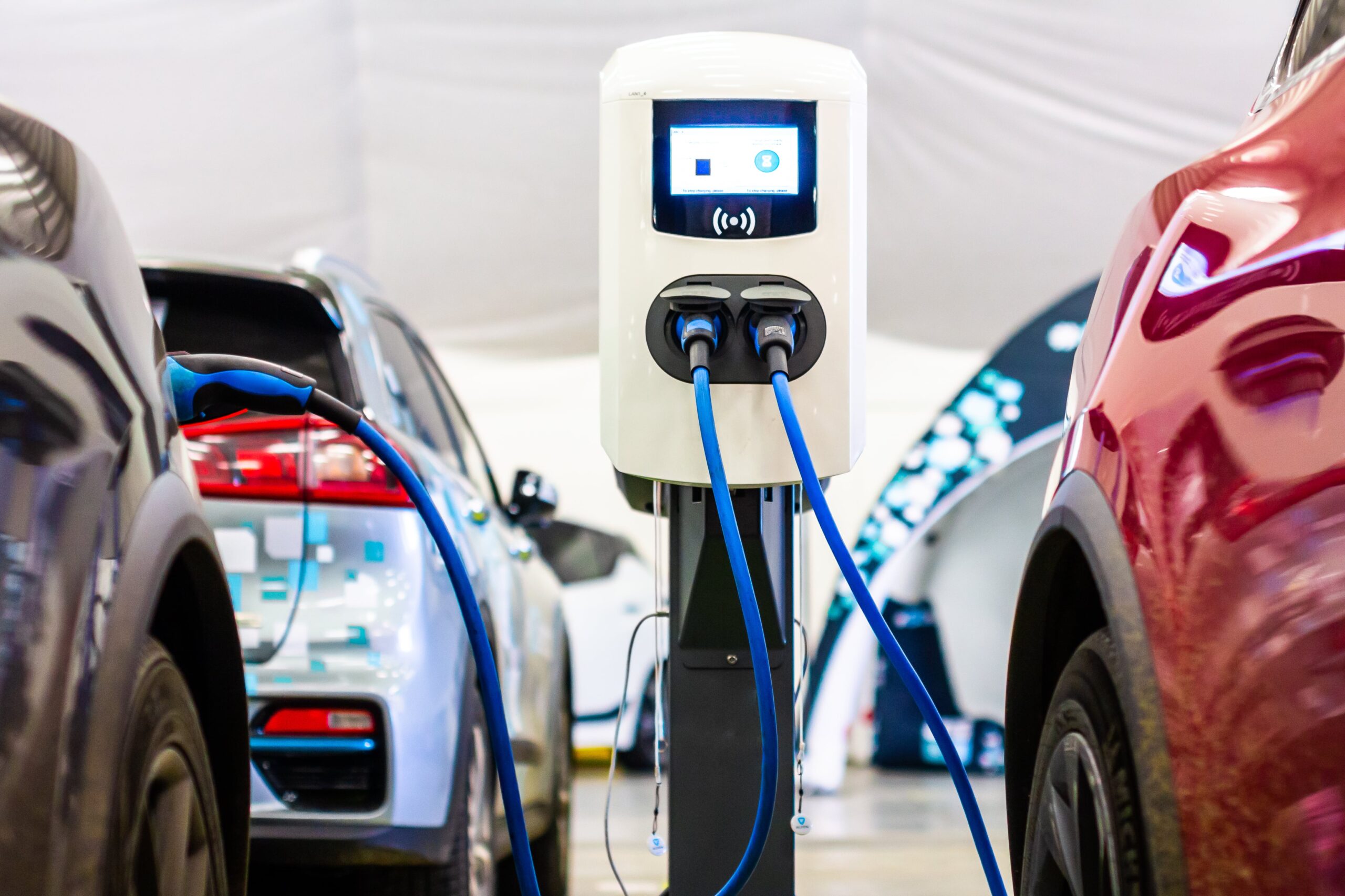
EV Chargers
With the move toward decarbonization, European economies are shifting toward electric vehicles. To power these vehicles, home chargers increase consumer power demand and change consumption patterns, requiring adaptability from the smart grid. They also can act as batteries to supply the home during peak hours, and to recharge during off-peak periods. Moreover, public charging stations require additional management capabilities supported by CEI technologies. CEI solutions are needed to remotely manage EV charging stations. They can be used to identify users and their vehicles and to manage payments. The chargers also must communicate with the network to report availability, so that users can be directed to available chargers. EV chargers utilize on-device computing resources and sensors, connectivity to the vehicle, as well as connectivity to the cloud for analytics, network management and additional funcitonality.
Sub-category use-cases
- Home charging stations
- Smart home energy management systems to integrate EVs, batteries, solar systems, home appliances, smart meters and grid pricing data for optimised usage
- Public charging stations
- Public charger networks
- Routing systems to recommend the nearest available charger
Projects use-cases
Energy Management and Decision Support System (EMDS)
The Energy Management and Decision Support system (EMDS) use case focuses on the energy consumption in smart homes. Consumers are already investing in smart devices and energy storage to better manage their electricity consumption. Green energy is enabling the transition to smart homes through active participation in and support of ESBN’s SMART meter programme and the installation of solar PV, solar thermal, smart heating controllers and EV chargers through Airtricity Energy Services.
Objectives and expected benefits:
- Support of the distribution network
- Foster uptake in smart, controllable domestic devices
- Can leverage payments for flexible energy usage
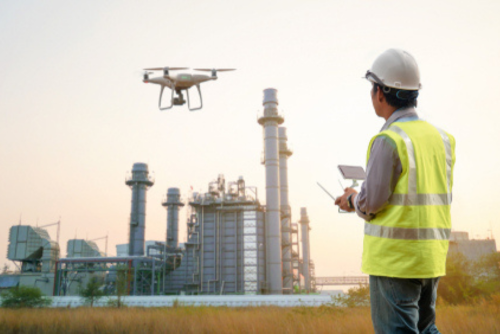
Drone based observation
Utilities and other energy companies use drone-based observation to visually observe conditions along powerline networks, pipelines, refineries, oil rigs, and other remote and distributed infrastructure. Using drones allows visual inspection in hard-to-reach locations (e.g. above an oil rig) and in remote locations, such as along thousands of kilometres of powerlines. Using drones sharply reduces labour requirements for periodic checks, allowing more frequent checks at lower cost, increasing resilience and allowing preventative maintenance. It provides significant benefits to the industry in terms of improved maintenance and resilience and reduced costs. According to the UNLOCK-CEI survey, a large share of energy respondents (44%) said they are using drone-based observation. In terms of technology, drones may include automated or remote piloting. As they move beyond the line of site, they may require very good cellular network connectivity, which suggests they are candidates for low-latency 5G networks as those networks are built out more widely. They typically incorporate imagery analysis in central locations using cloud or data centre resources. The drones require onboard computing for navigation, controls, connectivity, and potentially also onboard imagery analysis using AI-based models.
Sub-category use-cases
- Automated flight systems
- Automated navigation
- Imagery analysis
- Integration with other management systems to schedule field service workers
Projects use-cases
Containerised Edge Computing Near Renewable Energy Sources
To allow containerised edge data centre management located directly at energy sources, connected to the smart infrastructure and providing cloud continuity.
Objectives and expected benefits:
- Use case will prove the applicability of aerOS for managing small, edge nodes located directly at energy-producing locations, gathering information and events from the deployed smart devices.
- aerOS will distribute, monitor and relay tasks of stateless processing among a pool of near and far-edge nodes located at ELECT renewable energy premises
- The use of heterogeneous information in the orchestration and scheduling model will boost energy and resource optimisation
- Reduce equity investment in the system

